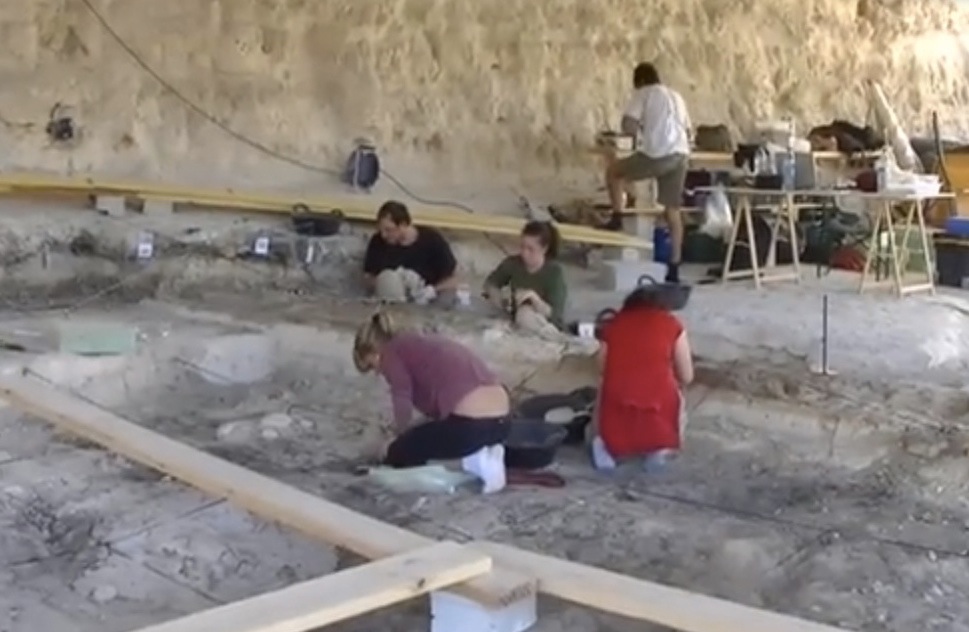 |
| Excavations in process at the site of Barranco León. From a YouTube screenshot Excavación en Barranco Leon en Orce |
Spanish cave site reveals evidence the environment played large in the dispersal of the earliest hominins into Western Europe.
First excavated in 1993, the site of Barranco León in the Guadix-Baza Basin of southeastern Spain, just 80 km west of the Mediterranean shoreline, has yielded simple Oldowan-type stone tools within a context dated as far back as 1.4 million years ago. It documents the earliest known hominin (early human ancestral) presence in Western Europe, evidenced by the discovery of one tooth and thousands of 'Mode 1' (Oldowan-type) stone tools associated with fossil fauna, particularly large mammalian herbivores. The examined evidence shows that at least some of the herbivores were scavenged as carcasses by hominins as food sources after the initial carnivore predators were finished with them. The discoveries there paint an emerging new picture of one of the first dispersals of early human ancestors into a non-African landscape.[...] popular-archaeology.com
Reference: Jordi Agustí, et al., Chronological and environmental context of the first hominin dispersal into Western Europe: The case of Barranco León (Guadix-Baza Basin, SE Spain), Journal of Human Evolution, doi:10.1016/j.jhevol.2015.02.014
Link 2: Los primeros homininos de Europa occidental y su relación con el clima
Se acaba de publicar en Journal of Human Evolution un estudio del contexto cronológico y climático del yacimiento de Barranco León (Orce), situado en la depresión de Guadix-Baza, datado en 1,4 millones de años. Sus investigadores consideran que el clima tuvo un papel muy impoortante en la llegada de los primeros homininos a Europa occidental...







No hay comentarios:
Publicar un comentario